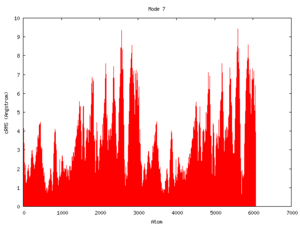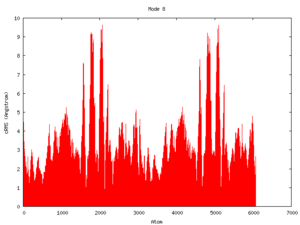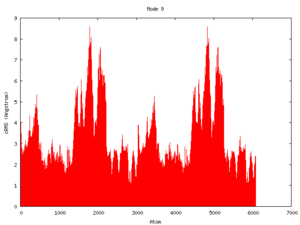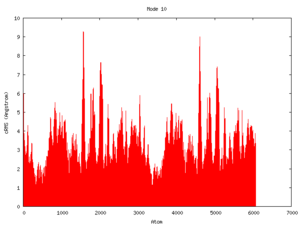Normal mode analysis
Contents
TODO
re-check all pictures
re-reference all pictures
add all references/quotes
Task?
For each server, analyze at least the lowest five normal modes.
- What information do the different servers provide?
- Which regions of your protein are most flexible, most stable?
- When you visualize the modes (provided by server or using for example PyMol or VMD), try to describe what movements you observe? Hinge-movement, “breathing”…
- Can you observe notable differences between the normal modes calculated by different servers?
- Out of the servers, chose one or two favorites and discuss the results of these in more detail. Why do you like these?
- When your MD simulations are finished, compare the lowest-frequency normal modes with your MD simulation using visualization software, e.g. PyMol or VMD. Can you observe different movements or similar dynamics? If possible, compare an overlay of the lowest-frequency modes to your MD simulation. You can superimpose the normal modes for example in VMD.
- What are the advantages and disadvantages of NMA compared to MD?
Parameters
- If possible, use a cutoff for Cα atom pairs of 15 Å.
- Calculate the 10 lowest-frequency normal modes (the six zero modes have to be considered for a few applications).
- In most cases you can upload the original .pdb file from the Protein Data Bank. In some cases, however, you can upload only the structure itself (ATOM lines of the .pdb file).
WEBnm@
WEBnm@ is a webserver based application that allows computation and low-frequency analysis of normal nodes of proteins. This computation is fully automated and only different types of results are presented to the user.
Webserver:
Input:
- 1a6z - all chains
Result: TODO: create gif according to: https://i12r-studfilesrv.informatik.tu-muenchen.de/wiki/index.php/Animated_Gifs#Webnma
Discussion:
All vmd files were visualized with the help of the VMD software in conjunction with the freeware ImageMagick.
ElNemo
Webserver:
Input:
- 1a6z
Dynamics: For all generated models the vibrations are shown in three different perspectives.
Anisotropic Network Model web server
Webserver:
Params:
- set the distance weight to 3.0
- try the amplitude scaling and vectors option
- have a look at the different ANM model cutoffs
oGNM – Gaussian network model
Webserver:
Input:
- 1a6z
Params:
- set the cutoff to 15 Å
Result:
- taking ages..
NOMAD-Ref
Webserver:
Params:
- set the distance weight to 3.0
- set the cutoff to 15 Å
Result:
All-atom NMA using Gromacs on the NOMAD-Ref server
Webserver:
Params:
- All-atom calculations are only supported for small proteins of up to 2,000 atoms. Use for example BPTI, PDB entry: 1BPT. Upload a .pdb file that contains only the ATOM lines of the original .pdb file. You can also choose another small protein for the all-atom NMA.
- set the temperature to 600K and 2000K
- you can visualize the modes with PyMol or VMD.
- Compare the all-atom NMA of BPTI (or your chosen protein) with an elastic network calculation, e.g. NOMAD-Ref.
Used:
- 1a6z?


















